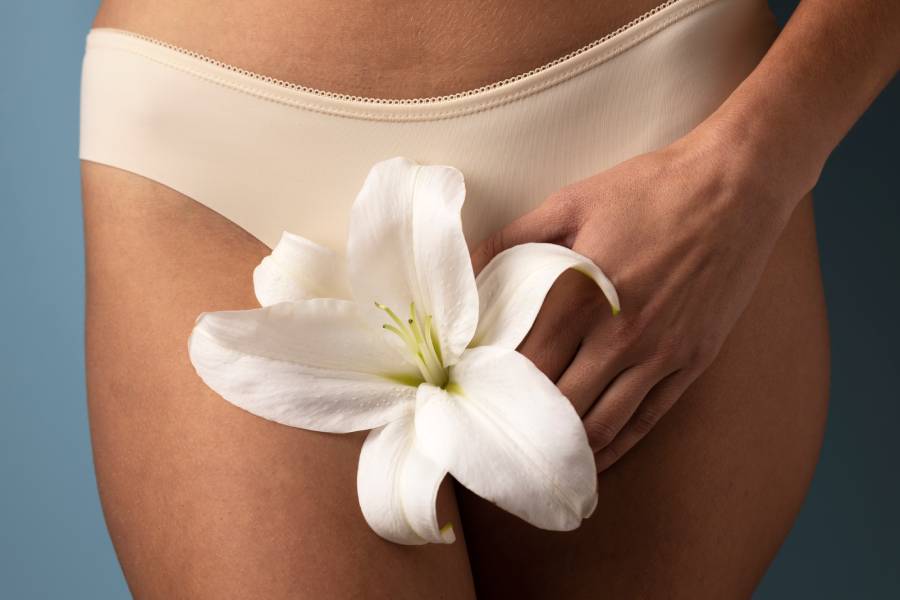Psychological Effects of Genital Aesthetics on Body Image
Categorised in: HEALTH GUIDE
Published Date:

In a society increasingly focused on physical perfection, the realm of genital aesthetics has surfaced as an area of both interest and concern, influencing the psychological well-being and body image of many. With the rise of genital cosmetic procedures, individuals are prompted to scrutinise their genital self-image, often correlating the perceived physical appeal with their overall self-esteem. This burgeoning trend merits exploration, as it brings to the forefront the profound impact such intimate alterations can have on an individual’s perception of themselves and their bodies. This discussion aims to shed light on the intricate connection between genital aesthetics and body image concerns, understanding the reasons behind the pursuit of genital cosmetic enhancements, and the subsequent effects on personal and social identity.
Understanding Genital Aesthetics and Body Image Perceptions
In recent years, genital aesthetic modifications have gained significant attention, influenced heavily by evolving cultural beauty standards. These modifications, ranging from medical interventions to cosmetic enhancements, showcase a diverse response to the societal views on genital appearance and body positivity. The dialogue surrounding these changes is not only about aesthetics but also about enhancing genital image satisfaction, which is crucial for psychological well-being.
The influence of cultural beauty standards on genital aesthetics cannot be underestimated. These standards deeply affect an individual’s self-perception and body image. In many cultures, what is considered attractive or desirable can lead to a high or low sense of genital image satisfaction. The deviation from these norms often prompts individuals to consider various alterations, seeking acceptance and validation within these predefined standards.
Moreover, body positivity plays a pivotal role in reshaping these perceptions. It encourages acceptance of all body types and appearances, challenging the traditional norms and advocating for a broader, more inclusive definition of beauty that encompasses genital aesthetics. This movement aims to foster a supportive environment where genital image satisfaction is based on personal comfort and health, rather than societal approval or disapproval.
Understanding the correlation between genital aesthetics and body image is essential for comprehending how deeply ingrained perceptions can affect an individual’s choice regarding genital aesthetic modifications. The conversation about these modifications is increasingly seen as a route to empowerment and self-expression, aligning closely with personal and cultural narratives on beauty and acceptance. By examining these elements, society can move towards more informed and compassionate approaches to body image and self-esteem.
Historical Perspectives on Genital Aesthetics
The evolution of genital modification and its relevance to cultural genital practices provides a fascinating narrative throughout human history. From the ancient traditions of the Pharaohs in Egypt to the secluded tribes in the Pacific Islands, each society has exhibited a unique approach to genital aesthetics, influenced by deeply ingrained historical beauty standards. These modifications, whether through circumcision or the more elaborate forms of adornment, often signified rites of passage, health, fertility, or beauty within those specific cultures.
Historical beauty standards have played a significant role in shaping the cultural practices surrounding genital aesthetics. In many cultures, genital modifications were not just personal choices but were embedded in the societal framework, influencing marital eligibility, social status, and community integration. Such practices were intricately linked to the myths, folklore, and religious beliefs of the community, often evolving over centuries as attitudes towards the body and sexuality changed.
As we delve deeper into the evolution of genital modification, it is clear that these practices were never isolated phenomena. They were part of a broader dialogue that included gender, power structures, and the human relationship with nature and the divine. Understanding these historical contexts enriches our perspective on current beauty standards and offers a comprehensive view of how genital aesthetics have been perceived and altered over time, reflecting broader societal changes and continuities.
The Psychological Impact of Genital Aesthetics on Individuals
The nexus between genital aesthetic dissatisfaction and mental health can be profound and far-reaching. For many, the distress emanates from a discordance between their own genital appearance and the perceived societal ideals. This misalignment often precipitates a severe impact on self-perception, fundamentally altering how individuals view their own bodies.
Mental health effects stemming from these concerns can vary widely, ranging from mild anxiety to more severe disorders such as depression. The psychological toll can affect daily functioning and interpersonal relationships, emphasizing the need for sensitive approaches in addressing these issues. Furthermore, cosmetic genital surgery comes into play as a significant factor. While some view these procedures as a pathway to reclaiming confidence, the psychological implications post-surgery can be a double-edged sword.
Post-operative satisfaction isn’t guaranteed, as outcomes may not always meet patient expectations, potentially leading to exacerbated feelings of dissatisfaction. It’s crucial for healthcare providers to discuss realistic outcomes and possible mental health effects with patients considering cosmetic genital surgery. In this context, the ultimate goal is to support individuals in achieving not only aesthetic satisfaction but also a harmonious mental state.
Genital Aesthetics and Relationships
The interplay between genital aesthetics and intimate relationships cannot be understated, especially when considering its influence on sexual confidence and partner perceptions. A positive perception of one’s genital aesthetics can significantly enhance sexual self-image, which in turn, boosts confidence within intimate interactions. This assurance is crucial in fostering a healthy, fulfilling relationship where both partners feel valued and accepted.
Conversely, concerns about genital aesthetics might lead to anxiety and insecurities, affecting sexual self-image and diminishing sexual confidence. Such worries are not uncommon, and they indeed impact how individuals perceive themselves and how they believe they are viewed by their partners. It’s important for individuals struggling with these concerns to communicate openly with their partners and seek support, whether through counselling or educational resources, to rebuild confidence and ensure mental well-being.
Enhancing understanding and fostering acceptance within intimate relationships when confronting issues of genital aesthetics requires sensitive dialogue. Partner perceptions play a significant role here, as positive reinforcement and acceptance from the partner can greatly alleviate personal insecurities and improve mutual satisfaction in the relationship. This supportive dynamic is integral to maintaining not only sexual confidence but a healthy sexual self-image, enhancing the overall quality of intimate relationships.
The Role of Social Media and Pornography in Shaping Attitudes Towards Genital Aesthetics
In recent years, the pervasive nature of social media platforms and the ubiquitous access to pornography have played significant roles in dictating and distorting public perceptions of genital aesthetics. This distortion is evident through the lens of social media influence and pornography expectations, which have together fostered a culture of genital normalization and unrealistic body image trends. By constantly bombarding users with curated and often altered images, these platforms set unattainable standards that most individuals find difficult, if not impossible, to meet.
Psychologically, the consequences of these skewed societal norms are profound. Many individuals face significant pressure to conform to these fabricated ideals, leading to myriad emotional and psychological challenges. This pressure is intensely magnified by the social media influence that thrives on the currency of likes and shares, further entrenching the desire for approval through physical appearance. Pornography, too, adds to these complexities. Its portrayal of genital aesthetics is often far removed from reality, establishing pornography expectations that seldom align with natural human diversity.
However, a counter-movement advocating for genital normalization and diversity is gaining momentum. More advocates are pushing back against the narrow depictions of body standards pushed by social media and pornographic content. This push includes promoting body image trends that encompass a broader, more inclusive representation of genital diversity, challenging the existing paradigms and encouraging a healthier, more realistic appreciation of human bodies. Such movements are crucial in recalibrating public perceptions and aiding individuals in embracing their bodies without the shadow of unrealistic comparisons.
Addressing and Overcoming Negative Psychological Effects of Genital Aesthetics on Body Image
In the quest for a more positive self-image, addressing concerns about genital aesthetics is paramount. It is essential to acknowledge the profound influence such concerns can have on one’s overall psychological well-being. Psychological treatments are available that specifically cater to these intimate body image issues, offering structured support and strategies for acceptance. Tailoring such interventions can lead to substantial improvements in self-perception and mental health.
Counselling for body image issues gives individuals a safe space to explore their feelings and the socio-cultural influences that have shaped them. Experienced counsellors employ various techniques to dismantle negative thought patterns and build a more compassionate and accepting relationship with one’s body. Encouraging genital aesthetics acceptance is one of the vital steps in this therapeutic journey. With guided assistance, individuals learn to appreciate their uniqueness, moving beyond societal ideals and self-criticism towards a state of self-acceptance.
Ultimately, fostering a positive self-image is an inclusive journey that recognizes the diversity of human bodies. Engaging in conversations, sharing experiences, and educational initiatives also play a significant role in this process. By standing together against unrealistic standards and promoting a message of self-love, society can shift towards greater inclusivity and acceptance. With numerous psychological treatments and support systems more accessible than ever, individuals seeking to overcome these negative psychological effects have a variety of options at their disposal. Embracing one’s body, inclusive of genital aesthetics, paves the way to enhanced self-esteem and a healthier, happier existence.
Related Posts

Why British Citizens Choose Turkey for Health Services?
British citizens are increasingly opting for Turkey when seeking medical treatments due to a combination of superior healthcare services, affordability, […]

Common Concerns About Genital Plastic Surgery
Genital plastic surgery, a burgeoning field within the realm of cosmetic enhancements, has witnessed a notable surge in popularity. Procedures […]

In which cases is labiaplasty necessary?
Labiaplasty, a procedure that has recently garnered significant attention, involves the surgical reduction of the labia minora. This operation, also […]

Healthy Recovery Process After Genital Aesthetic Surgery
Day Things To Do Things to Avoid 1-7 Days – Bed rest – Using medications recommended by the doctor – […]

When can i eat ice cream after gastric sleeve?
The allure of sweet treats post-gastric sleeve surgery is a common query. It is imperative to exercise patience as your […]